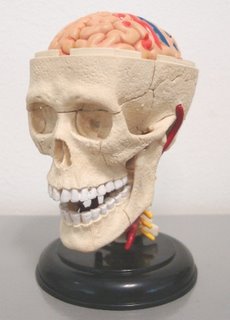 One important reason why the Star Wars series of films has such a wide appeal is due to its story structure. George Lucas was inspired by Joseph Campbell's book, The Hero with a Thousand Faces, and deliberately applied Campbell's ideas into his storyline.
One important reason why the Star Wars series of films has such a wide appeal is due to its story structure. George Lucas was inspired by Joseph Campbell's book, The Hero with a Thousand Faces, and deliberately applied Campbell's ideas into his storyline.Campbell was studying comparative mythology and wanted to find out if there are common elements between major myths around the world that have lasted for thousands of years. He elucidated a fundamental structure which he called the "monomyth" or "the hero's journey" and summarized it like this:
A hero ventures forth from the world of common day into a region of supernatural wonder: fabulous forces are there encountered and a decisive victory is won: the hero comes back from this mysterious adventure with the power to bestow boons on his fellow man.
The monomyth is divided into three sections - "Departure", "Initiation" and "Return". Each of these sections has a set of characteristic stages, for example "Supernatural Aid" in Departure where the hero encounters an old wizard (Obi-Wan!) who provides him with special tools (Lightsabre!) and advice (Use the Force!) for the adventure ahead.
Only a few world myths contain all these stages, some of them only have a few stages and others have them in a different order. Campbell's monomyth is thus criticized for focusing on the similarities and glossing over the differences between the myths, and scholars have also questioned its usefulness and general validity.
Nonetheless the monomyth has been an influential tool for plot development; aside from Star Wars, popular movies like The Lion King and the Matrix series (possibly the Harry Potter series as well) have story structures that are modelled on the monomyth.
I won't go into further details of the monomyth here, but suffice to say that by using a comparative strategy, Campbell was able to create a common resource out of the dozens of diverse mythologies in the world. He recognized that it is impossible to do this based on any single myth.
Indeed, I would argue that in general single cases only represent data and not knowledge. Outside the context of mythology, even single cases that are firmly rooted in physical evidence cannot really enlighten us about the nature of our Universe; we can only learn about them, not from them.
In other words, they have descriptive but not prescriptive value.
**********
The power of comparative analysis was driven home in my mind very early in my graduate student career by my advisor.
During a genomics lecture he illustrated this by showing a single sequence from one species of animal. For example, here's part of the amino acid sequence of a human gene:
MYNMMETELKPPGPQQTSGGGGGNSTAAAAGGNQKNSPDRVKRPMNAFMVWSRGQRRKMAQEN...
Well, it's a string of letters. You can't learn much just by staring at it.
But when you do an alignment with homologous genes from many other species...

... important features immediately jump out at you.
The yellow blocks represent regions that are completely identical over hundreds of millions of years of evolution - it's a good bet that those regions are functionally crucial. Blue and green blocks are identical only among some species, while white areas exhibit high variability.
Therefore, you can see regions of similarities as well as regions of differences. Regions that are common to mammals, or just to rodents, or unique to one species which may reflect functions that are only relevant to those group of animals.
This is knowledge.
Whether it is science or history, information derived from a single case is only descriptive of the case itself - in order to understand fundamental principles, produce testable predictions or to "give advice" to other people, you must have data from more than one case. With an increasing number of aligned cases comes a more accurate and more refined knowledge of the subject matter.
Hence the "analogy" aspect of FAMILIAR - knowledge obtained by comparing the features of complex systems and aligning them into a structured resource, not only at the same organizational level, but also across organizational levels.
I am aware that argument from analogy is a logical fallacy, but that does not preclude the use of an "analogy machine" like FAMILIAR to start the investigation by generating hypotheses and enabling cross-discipline visualization.
Having a systematic way to align single cases into a common resource allows people to see both the similarities and differences between the cases. Where the cases are too different in key areas to be effectively compared, proposed models can be rejected as uninformative. Where cases have striking similarities over numerous key characteristics, there is compelling support for a fundamental structure among them.
However, human knowledge is wildly varible in format. How is it possible to align diverse forms of knowledge into one common resource?
Stay tuned for the next post on the FAMILIAR Core.


0 Comments:
Post a Comment